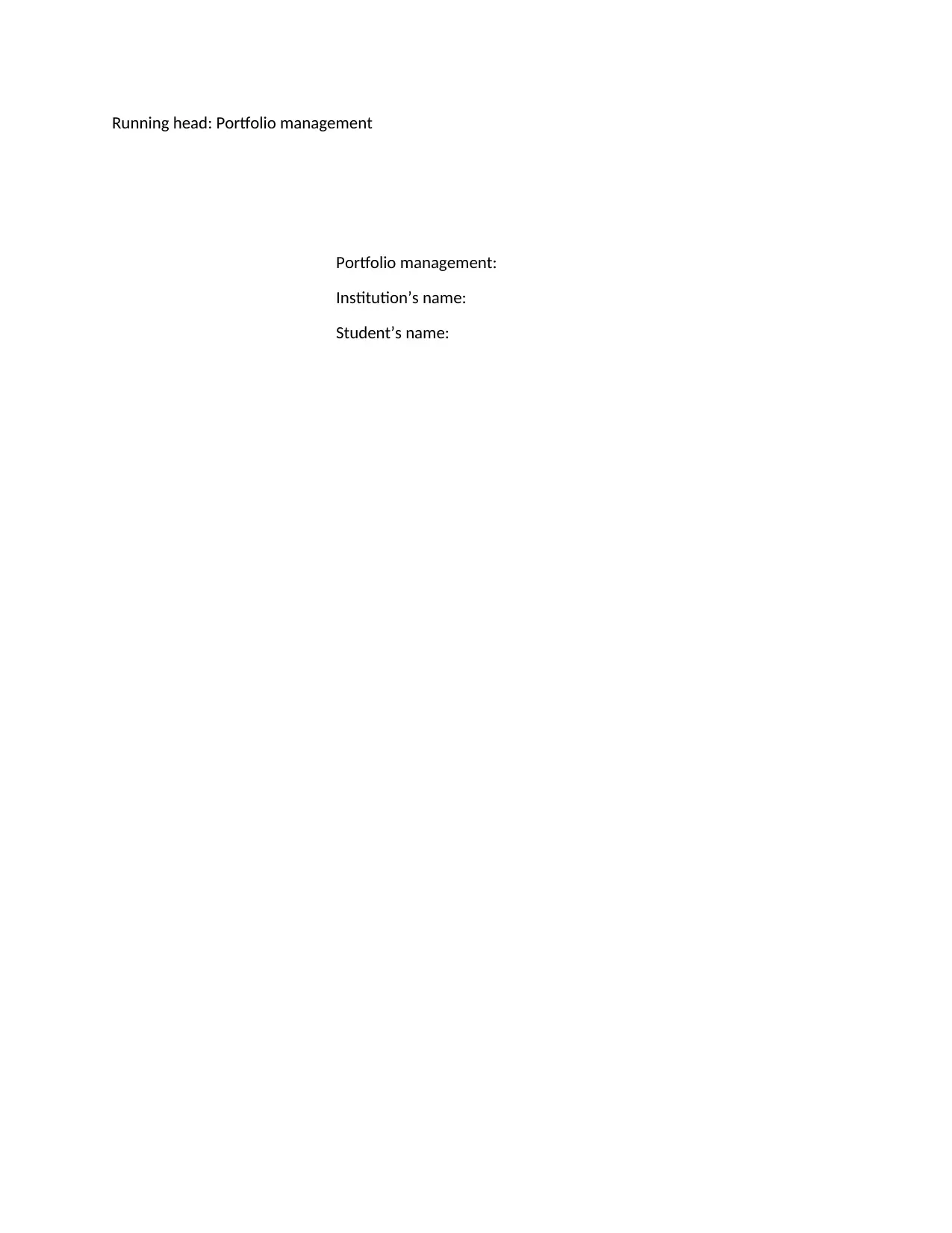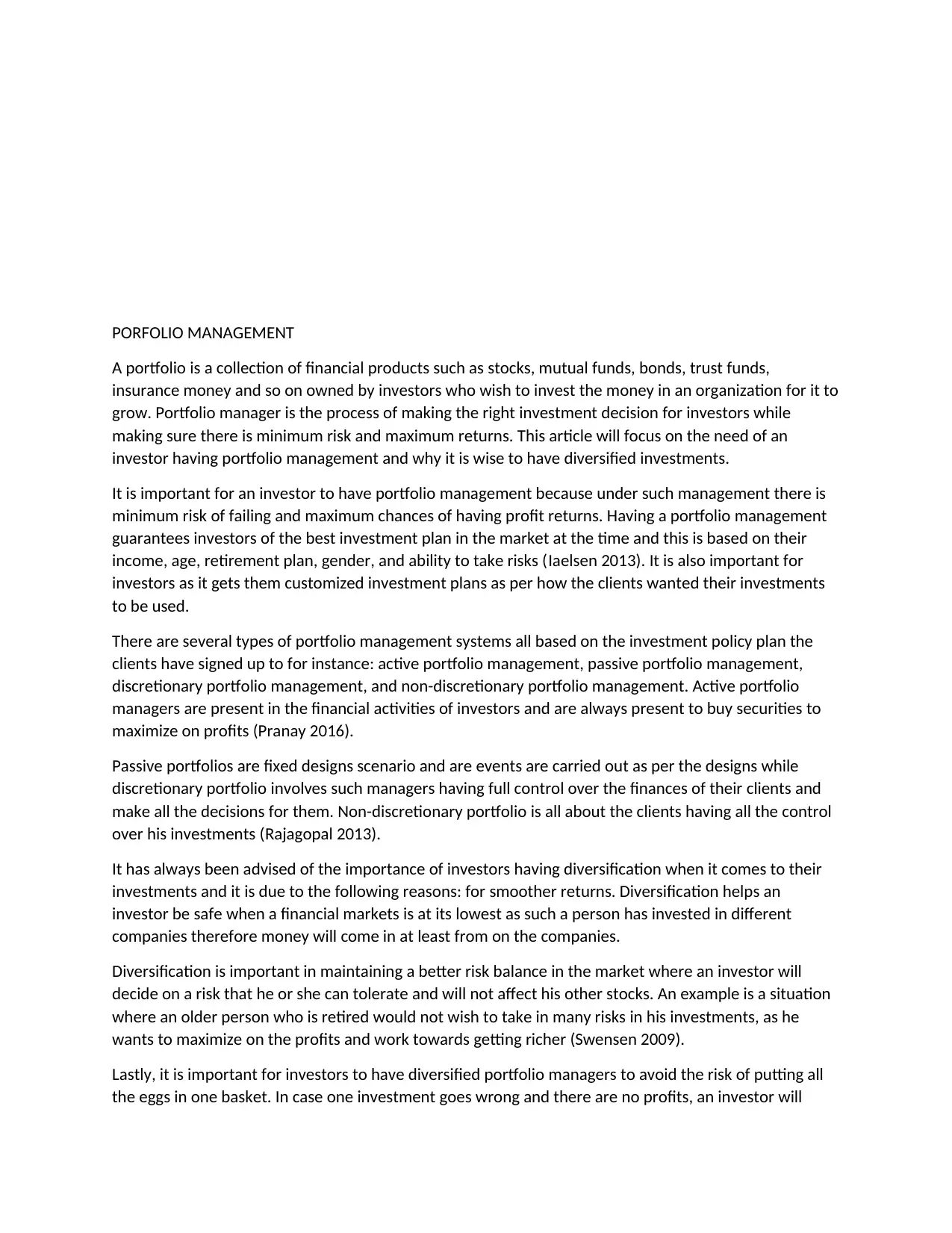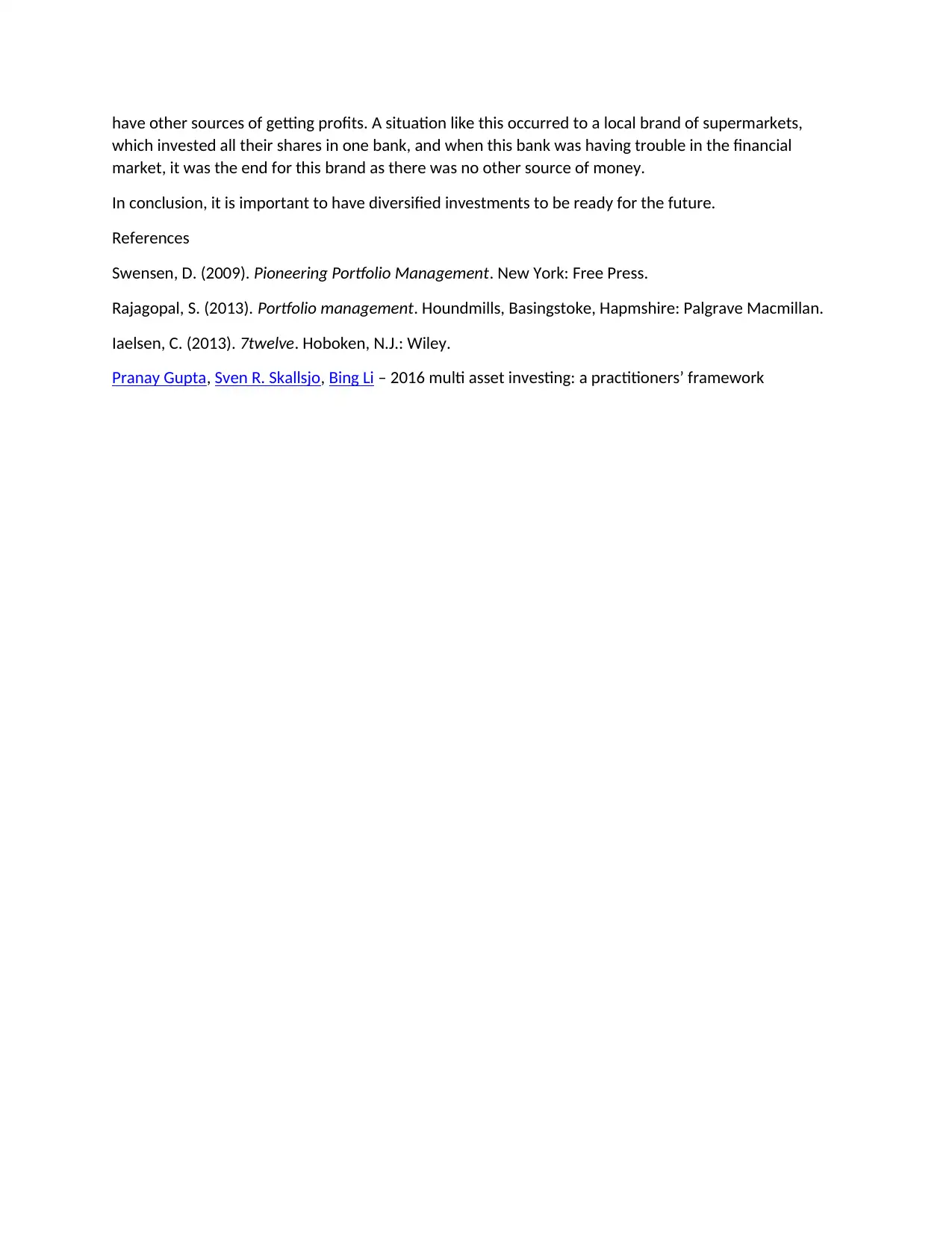Portfolio Management: Strategies, Risks, and Diversification Report
VerifiedAdded on 2021/11/17
|3
|656
|56
Report
AI Summary
This report delves into the realm of portfolio management, emphasizing its significance in financial planning and investment strategies. It highlights the importance of diversification in mitigating risks and ensuring smoother returns, especially in volatile financial markets. The report explores various portfolio management systems, including active, passive, discretionary, and non-discretionary approaches, providing a comprehensive understanding of their functionalities and applications. It underscores the need for investors to have diversified investments to minimize risks and maximize returns, citing real-world examples to illustrate the potential consequences of over-concentration. The report also stresses the importance of aligning investment strategies with individual investor profiles, considering factors such as age, risk tolerance, and financial goals. Overall, the report serves as a valuable resource for understanding the principles and practices of effective portfolio management, offering insights into building a robust and diversified investment portfolio.
1 out of 3










![[object Object]](/_next/static/media/star-bottom.7253800d.svg)